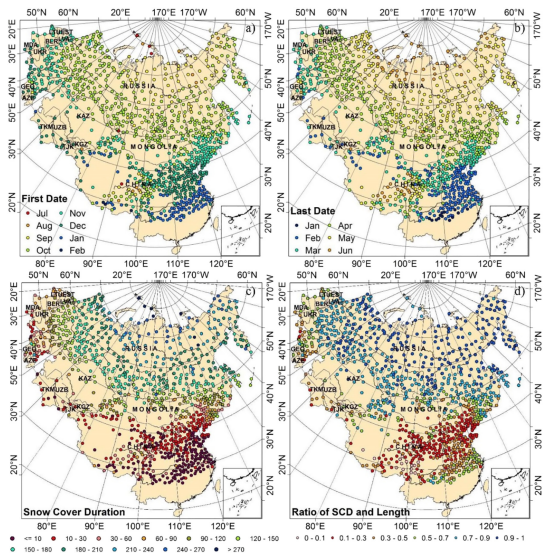1966-2012年欧亚大陆积雪出现时间与持续时长的时空变化特征

主题:Eurasian continent
类型:Snow cover
作者: Xinyue Zhong Tingjun Zhang Shichang Kang Jian Wang
发布时间:None
类别: 地球科学
积雪的时间和持续时间对地表反照率、地表能量收支和水文过程有着至关重要的影响。以前使用现场或卫星遥感数据的研究大多是针对特定地点的(西伯利亚和青藏高原),遥感和/或建模数据包含很大的不确定性。在这里,我们使用了1103个长期(1966-2012年)地面雪测量站,研究了欧亚大陆积雪时间和持续时间的空间和时间变化,以及影响这些变化的因素。我们发现,积雪最早的年度开始和最晚的消失发生在北极海岸,那里的长期(1971-2000年)年平均积雪持续时间(SCD)超过9个月,是本研究中最长的。在中国南方发现了最短的SCD,≤10天。积雪覆盖的第一和最后日期(分别为FD和LD)、SCD以及SCD与雪季长度之比(RDL)通常取决于欧亚大陆的纬度,而取决于青藏高原的海拔。在1966年至2012年期间,FD延迟,LD提前约1天/十年,RDL增加约0.01天/十年间。LD、SCD和RDL异常(相对于1971-2000年期间)也与纬度显著相关。低纬度地区LD和RDL阳性的进展更为显著,高纬度地区SCD的下降更为显著。SCD的变化与秋季气温和降雪以及春季变暖有关。由于降雪增加,SCD在新疆北部和中国东北部特别增加。俄罗斯西南部、青藏高原和长江沿岸SCD的显著减少主要受气候变暖的影响。